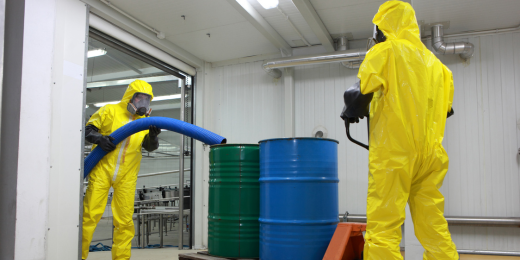The Single Strategy To Use For Reclaim Waste
The Single Strategy To Use For Reclaim Waste
Blog Article
Getting The Reclaim Waste To Work
Table of ContentsEverything about Reclaim WasteAn Unbiased View of Reclaim WasteThe Best Guide To Reclaim WasteWhat Does Reclaim Waste Mean?The Definitive Guide for Reclaim Waste
Discover the types, occurrences, and forms of fluid waste. Residential sewer waste describes the waste and products from a property sewage-disposal tank. This sort of waste is developed by human beings in houses, institutions, and other buildings. This only includes sewage-disposal tanks that have a drain area. The appropriate management and disposal of residential sewage waste call for liquid waste to be moved to a sewer treatment plant where the correct techniques and tools are related to detoxify and take care of waste.
Industrial waste frequently includes possible dangers, such as flammable products or a mix of fluid and strong waste products, and needs an extra advanced and thorough disposal process. The disposal of industrial waste generally entails the filtering of waste prior to transportation to make sure safe and appropriate disposal. Industrial waste is developed from results and runoff of industrial procedures and manufacturing.
This sort of waste can not make use of the same sewage administration transport or procedures as septic or business fluids. The hazardous waste management process requires the assessment and screening of liquid waste prior to it goes through the disposal procedure (liquid waste disposal melbourne). Runoff waste is the liquid waste that comes from overflow and excess stormwater in extremely booming locations or cities
Runoff waste can cause contamination and flooding if not taken care of effectively. Making certain appropriate waste administration can protect against catastrophes and minimize ecological injury.
Some Known Factual Statements About Reclaim Waste
Contact PROS Solutions today to find out about our waste monitoring and disposal services and the correct ways to take care of the fluid waste you produce.
(https://reclaimwaste1.edublogs.org/2024/11/12/efficient-liquid-waste-removal-and-disposal-your-complete-guide-to-sustainable-waste-management/)Do you understand what occurs to your water when you end, purge the toilet or drain pipes the cleaning equipment? No? Well, it's worth recognizing. This supposed 'wastewater' is not just an essential source but, after therapy, will be launched to our land, waterways or the sea. Utilized water from toilets, showers, bathrooms, kitchen sinks, washings and industrial procedures is referred to as wastewater.

water utilized to cool equipment or clean plant and tools). Stormwater, a form of wastewater, is drainage that streams from farming and urban locations such as roofings, parks, yards, roads, courses and gutters right into stormwater drains pipes, after rain. Stormwater moves unattended directly to neighborhood creeks or rivers, eventually reaching the sea.
Reclaim Waste Fundamentals Explained
In Queensland, most wastewater is treated at sewer therapy plants. Wastewater is transported from domestic or industrial websites via a system of sewage systems and pump terminals, understood as sewerage reticulation, to a sewage treatment plant.
The Department of Natural Resources advises city governments concerning handling, operating and preserving sewerage systems and treatment plants. In unsewered locations, neighborhood federal governments might need householders to install individual or house sewer therapy systems to treat domestic wastewater from toilets, kitchens, bathrooms and washings. The Division of Natural Resources authorizes using home systems when they are shown to be efficient.
A lot of stormwater receives no treatment. In some new communities, treatment of some stormwater to remove litter, sand and gravel has actually started utilizing gross contaminant traps. Wastewater therapy happens in 4 stages: Removes strong matter. Larger solids, such as plastics and other objects incorrectly discharged to drains, are eliminated when wastewater is travelled through displays.
Wastewater then streams right into big containers where solids clear up and are gotten rid of as sludge. Grease and residue are skimmed from the surface. Makes use of small living organisms recognizes as micro-organisms to break down and get rid of staying dissolved wastes and great bits. Micro-organisms and wastes are incorporated in the sludge. Eliminates nitrogen and phosphorus nutrients that can cause algal blossoms in our waterways and intimidate aquatic life.
Some Known Details About Reclaim Waste
Nutrient elimination is not available at all sewage therapy plants because it needs expensive specialised equipment. Clear liquid effluent generated after treatment may still include disease-causing micro-organisms - liquid waste removal melbourne.

Most wastewater flows right into the sewerage system. Under the Act, neighborhood federal governments provide authorizations and licences for ecologically appropriate tasks (Ages) involving wastewater launches that might have a neighborhood impact.
The Definitive Guide for Reclaim Waste
Or else, examples are taken for research laboratory analysis. Often numerous examinations are needed to establish the degrees of each of the various contaminants such as oils, hefty metals and pesticides in water. Surveillance offers accurate details about water high quality and can validate that visit licence conditions are being satisfied. The details acquired with surveillance offers the basis for making water quality decisions.
Report this page